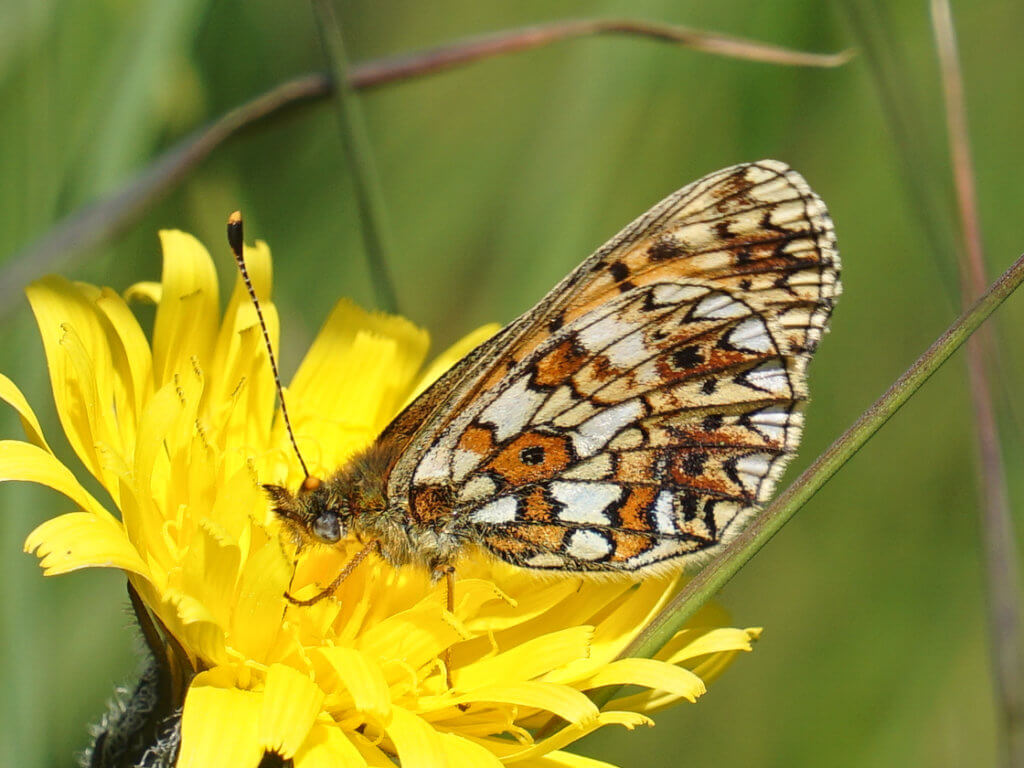
Paul writes: Small Pearl-bordered Fritillary (Boloria selene) was a new butterfly for me last year. I knew they bred at Fen Bog, a Yorkshire Wildlife Trust reserve on the North York Moors, so I thought I’d see if I could spot one. Fen Bog is a moorland reserve with a large area of wet heath, which is the ideal habitat for this butterfly. Sure enough after a short while on the reserve there were several fritillaries flying around, the only problem was distinguishing the Small Pearl-bordered from the Dark Green Fritillary (Argynis paphia), which is also present on the site. In the end it wasn’t too difficult as the Small Pearl-bordered is a much daintier low flying butterfly. All that remained was to get a good view of the underwing, which is the main distinguishing feature for most fritillaries. This is the thing I love about them most, they all look like winners in a design a butterfly wing colouring competition.
Small Pearl-bordered butterflies used to be a common species throughout Britain but now their range is much reduced, loss of habitat is the most likely reason. They are still common in Scotland, Wales and parts of western England but only exist in the rest of the country in a few isolated areas. They start flying at the end of May, a bit later as you travel North, and end in the middle of July. I saw this one on 25 June 2018.
[registration_form]
Unlike most habitat loss much of the SPBF’s habitat is still there – but it has become unsuitable due to lack of management of the woodland they used to occupy. Nearly half England’s woodland area is unmanaged for anything other than game – and much not even for that. Most unmanaged woodland is broadleaved and much of it ancient, and much of it coppice that fell out of harvesting between the 1890s and 1930s, and was further affected by the removal of remaining timber trees during WW2. A significant proportion is in conservation management – but lack of skills amongst conservation managers and money -especially to protect coppice regrowth from burgeoning deer populations – mean many woods suitable for SPBF remain unmanaged, dark and unsuitable. In contrast to birds butterflies suffer from a limited ability to move between sites so loss of each local population is likely to be final.